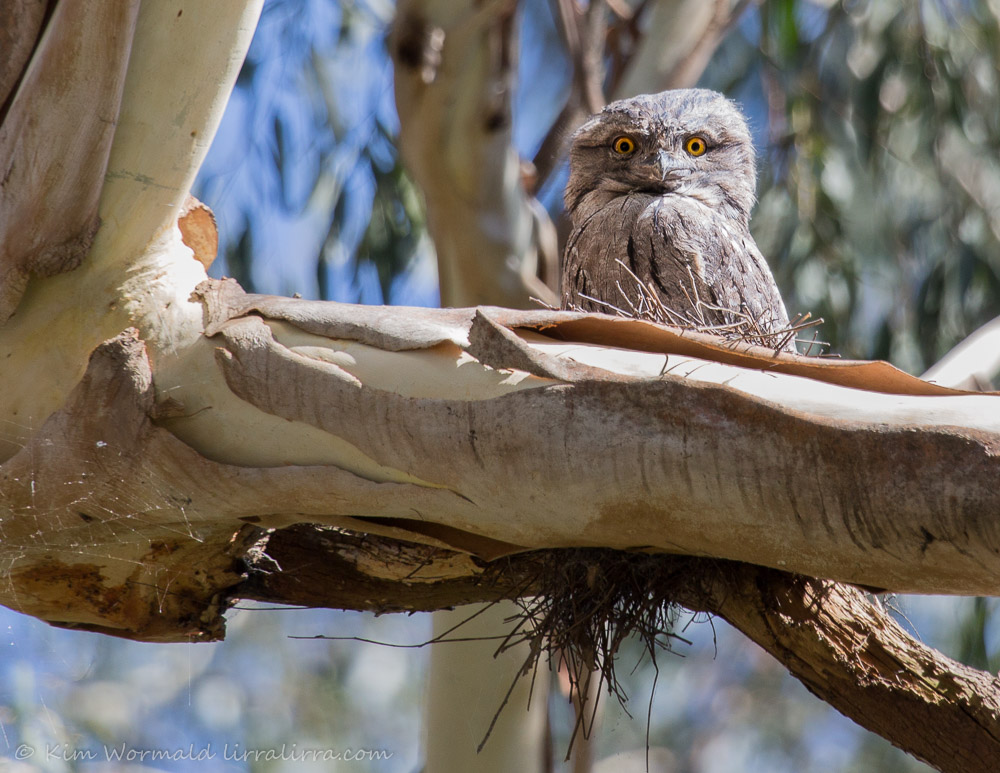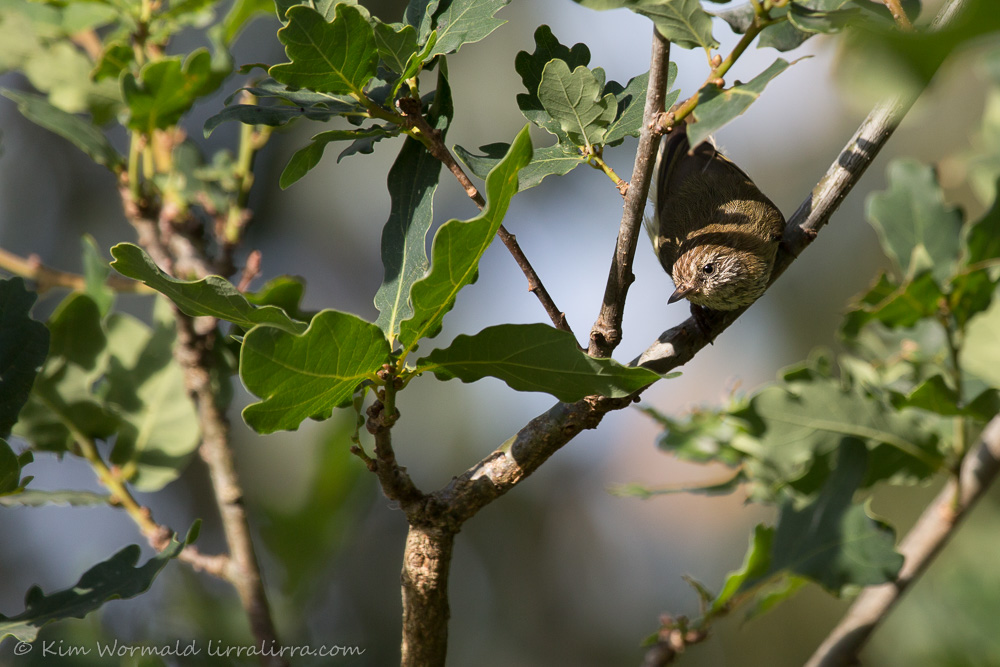A medley of the images I’ve taken this week includes a juvenile White-naped Honeyeater, a Striated Thornbill peeking through the shrubbery and a Tawny Frogmouth sitting on his nest.
 Tawny Frogmouth (Podargus strigoides) – male
Tawny Frogmouth (Podargus strigoides) – male
Canon 5DIII, 100-400mm L IS USM, 1/500, f5.6, ISO 400, focal length 400
This Tawny Frogmouth is perched on a scraggly nest as it incubates what is likely to be two or three eggs. I like the way the nesting sticks can be seen above and below the branch and trust that the nest is more secure than it looks. This male (males incubate the eggs during the day) could be seen from a bridge crossing a creek. The tree was about 20 metres from the bridge and although he looks very obvious in the cropped image, initially he wasn’t easy to see. Tawny Frogmouths are masters of disguise and can be extremely difficult to spot as their colouring and posture often make them look as though they are part of the tree.
Tawny Frogmouths range from about 35cm to 55cm and although they are nocturnal and look owlish they are more closely related to nightjars. Six seriously cute images of Tawny Frogmouth youngsters can be seen at a post from last year: Seriously Cute
 White-naped Honeyeater (Melithreptus lunatus) – juvenile
White-naped Honeyeater (Melithreptus lunatus) – juvenile
Canon 5DIII, 100-400mm L IS USM, 1/400, f5.6, ISO 800, focal length 390mm
This little bird had me puzzled for a while. Adult White-naped Honeyeaters and Brown-headed Honeyeaters were in the area and because of the softness of this bird’s general colouring I wondered initially if it was a Brown-headed Honeyeater but the crescent above its eye is bright orange and typical of White-naped Honeyeaters.
These honeyeaters are about 14cm and weigh about 13 grams. They can be found from South Australia around to northern Queensland and in the south western corner of West Australia. They prefer to forage in the tree canopies and, like most honeyeaters, they feed on nectar and insects.
 Striated Thornbill (Acanthiza lineata)
Striated Thornbill (Acanthiza lineata)
Canon 5DIII, 100-400mm L IS USM, 1/800, f6.3, ISO 400, focal length 390mm
I am ridiculously fond of thornbills. At just 10cm and weighing 7 grams they are super tiny and super hyperactive little birds. I was watching the Striated Thornbill above as it darted around in the bushes looking for insects. It flew into an oak tree for a few seconds as I tried to follow it’s haphazard movements through the lens. Then it popped its head into a ray of sunlight and I remembered to press the shutter button. If you’re not familiar with the species it should help with scale to see that the thornbill is smaller than the emerging oak leaves.
Happy birding, Kim
~ Thank you for your visit and comments.
~ If you’d like to receive a weekly email informing you that lirralirra has been updated please add your email address to the ‘subscribe’ box above right.

Okay the frogmouth is a new one on me and what a goofy looking guy but super cool! The honeyeaters you’ve shown so far are just cool and I applaud you being able to get such a super image of the thornbill – I’d bet as hyperactive as some of our songbirds and super hard to get a good shot of. Thank you for sharing the information on these birds along with your images. I love learning about all of your native birds.
Very goofy, haha, and the inside of its mouth is bright yellow which makes it even goofier when it yawns. I appreciate your comments Sherry, and can imagine how hyperactive your songbirds must be.
Love the White-naped Honeyeater image. Checked out the Seriously Cute post … it is a proper title. About Frogmouths being masters of disguise … I took some photos of a Papuan Frogmouth in Cairns Botanical Gardens in 2012. The bird was almost invisible it was so well disguised. The bird was motionless and I took a series of shots exposing for the bird and then for the surround and managed to get a good view of the bird after some Photoshop work.
That sounds great Dave. I’d like to see a Papuan Frogmouth, from your description maybe I have without knowing it! Is your shot available to see online?
Feathered enchantment. Again.
Thank you.
Now there’s a title I should use one day!
Seriously beautiful photos, Kim.
Thank you Carole.
remarkable shot of the thornbill kim. its so weeny! love glenn
They really are tiny little dots